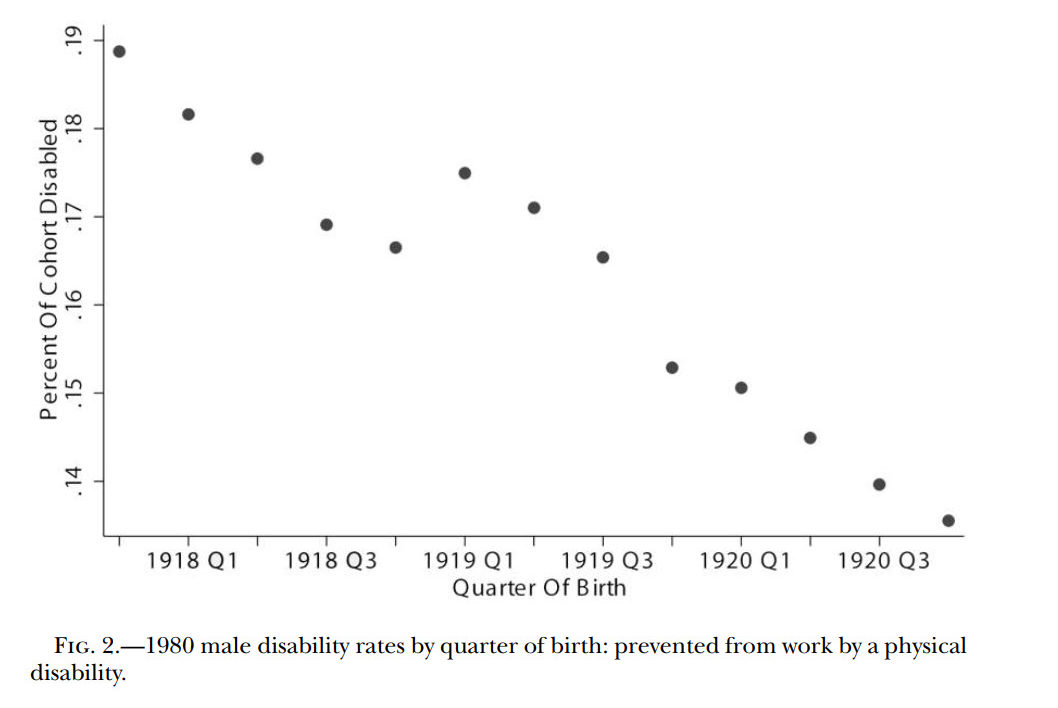The Lasting Effects of the 1918 Influenza Pandemic
 [I’ve never put a trigger warning on a post before but given the current situation the information here is potential upsetting to anyone expecting a child. I do not think that the current pandemic will be as bad as the 1918. I am also hopeful that the weather will work in our favor and that, as Tyler argued, America will start to work. Do also read my post, What Worked in 1918-1919 for a more positive message.]
[I’ve never put a trigger warning on a post before but given the current situation the information here is potential upsetting to anyone expecting a child. I do not think that the current pandemic will be as bad as the 1918. I am also hopeful that the weather will work in our favor and that, as Tyler argued, America will start to work. Do also read my post, What Worked in 1918-1919 for a more positive message.]
The 1918 influenza pandemic struck the United States with most ferocity in October of 1918 and then over the next four months killed more people than all the US combat deaths of the 20th century. The sudden nature of the pandemic meant that children born just months apart experienced very different conditions in utero. In particular, children born in 1919 were much more exposed to influenza in utero than children born in 1918 or 1920. The sudden differential to the 1918 flu lets Douglas Almond test for long-term effects in Is the 1918 Influenza Pandemic Over?
Almond finds large effects many decades after exposure.
Fetal health is found to affect nearly every socioeconomic outcome recorded in the 1960, 1970, and 1980 Censuses. Men and women show large and discontinuous reductions in educational attainment if they had been in utero during the pandemic. The children of infected mothers were up to 15 percent less likely to graduate from high school. Wages of men were 5–9 percent lower because of infection. Socioeconomic status…was substantially reduced, and the likelihood of being poor rose as much as 15 percent compared with other cohorts. Public entitlement spending was also increased.
 At right, for example, are male disability rates in 1980, i.e. for males around the age of 60, by year and quarter of birth. Cohorts born between January and September of 1919 “were in utero at the height of the pandemic and are estimated to have 20 percent higher disability rates at age 61…”.
At right, for example, are male disability rates in 1980, i.e. for males around the age of 60, by year and quarter of birth. Cohorts born between January and September of 1919 “were in utero at the height of the pandemic and are estimated to have 20 percent higher disability rates at age 61…”.
Figure 3 at right shows average years of schooling in 1960; once again the decline is clear for those born in 1918 and note that not all pregnant women contracted influenza so the actual effects of influenza exposure are larger, about a 5 month decline in education, mostly coming through lower graduate rates.
Higher disability and lower education translate into greater government payments as show in the final figure below. Almond labels these welfare payments which might be slightly misleading–these are Social Security Disability payments in 1970. Here’s Almond:
Average payments to women and nonwhites in 1970 are plotted in figure 8. The average welfare payment was 12 percent higher for both women and nonwhites born in 1919, or approximately one-third higher for children of
mothers who contracted influenza. When we focus on quarter of birth, it is apparent that these increased payments are generated by high payments to those born between April and June of 1919.
Note that men and women who were especially disabled could have died before 1970 and so these are lower bounds on the disability impact.
Fetal exposure seems to be the key as Almond tests for and rejects other possibilities. The 1918 kids, for example, seem about the same as the 1920 kids so it’s not that the flu killed off the weak kids in 1918.
Almond was interested in the 1918 pandemic not simply as a historical episode but to make the case that infant health and infant health programs have high benefit to cost ratios, a still relevant lesson.

Hat tip: Wojtek Kopczuk.